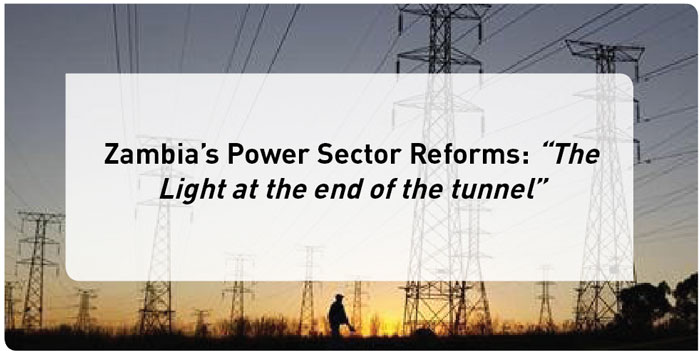Earlier this year, the Energy Regulation Board approved ZESCO Limited’s application for an upward tariff adjustment effective 1st January 2020 and since then there have been a number of positive power sector policy and regulatory reforms that have taken place. The Government of the Republic of Zambia approved the Revised National Energy Policy, 2019 which is anchored on the Seventh National Development Plan (7NDP) and Vision 2030 in order to guide the development and management of the energy sector by considering technological advancement and developments in the energy sector. The Electricity and Energy Regulation Acts were revised to provide for sale and purchase of electricity within and outside Zambia and improve the regulatory environment among other objectives.
Adequate and reliable power supply underpins any successful economy and Zambia has struggled to generate enough electricity to meet growing demand as the country has developed.
Load management has in the past and present time led to severe consequences for the economy as businesses and small to medium sized enterprises have scaled back production and households have had to grapple with long hours of darkness. As demand continues to grow it is essential that Zambia gets the power sector generation mix right for the country to fulfill its potential for growth.
Under investment in the power sector over the years has been largely due to below cost tariffs and a bureaucratic regulatory environment which has slowed private sector investment. Some of the challenges identified include;
- Over-dependence on Hydrological sources of power which made up 80.45 percent of installed capacity as of 2019. The remainder of the generation mix comprised of coal (10.06%); HFO (3.69%); diesel (2.80%); and solar (2.99%).
- Modelling trends from Zambia’s river basins suggest that hydropower potential will gradually decline in the future due to climate change and increasing water demand from other sources.
- Low rates of access to electricity in rural areas at around 4.4%. Despite this the Rural Electrification Authority successfully completed the implementation of ten carry-over projects in six provinces across Zambia consisting nine Grid Extension Projects and One Mini Hydro Power Project
- Below cost tariffs which have constrained ZESCO’s ability to undertake new investments and to a degree its ability to raise capital which in turn is linked to its financial situation.
This mix of factors point to the need for Zambia to focus on attracting private investment in the power sector and speeding up projects that are near completion through;
- Prioritization of projects that have potential to yield high economic returns in the short to medium term and stemming cost escalation.
- Establishment of a central planning function in the Ministry of Energy, to develop a strategic vision and delivery plan for increasing and diversifying power capacity in the country through investment in Independent Power Producers.
- Establishment of a central procurement function to sit alongside the planning function and secure investment in line with the Government’s strategic vision. The procurement process is lengthy and opaque, which has discouraged investment across the board. The planning function should look to centralise commercial capability, run more competitive tenders and streamline the procurement process, which will lower barriers to entry for investors and deliver value for money for consumers.
- Improve the credit-worthiness of ZESCO: as an off-taker, it is essential that investors have confidence that the organization can purchase the energy generated, which can be improved through increased financial transparency and providing more secure guarantees. ZESCO further needs to revisit the administration of its lifeline tariff by exploring viable options for reforming the current subsidy policy whose targeting is poor (The lifeline subsidy policy currently covers all households regardless of income status).
Conclusion
Historically, Zambia’s approach for power development has been for the Government, via ZESCO, to undertake investment in capacity. The Government has also led the recent Zambia Power Rehabilitation Project which involved various capacity and transmission upgrades as well as demand-side management measures. Recently, ZESCO Limited and Power China signed three contracts to develop 600MW (AC) grid-connected Solar PV Power Plants to be located in Chibombo, Chirundu, and Siavonga Districts. This marks a giant step in ZESCO’s efforts to diversify the energy mix in the wake of climate change.
As noted in the 7NDP, Zambia has plentiful resources for electricity generation, including hydropower, solar, biomass, geothermal. The challenge is getting investment in power plants that can convert these resources into useful electricity. There is no shortage of potential pipeline projects. However, many of these projects can only reach completion if the correct policy framework is developed and supported.




